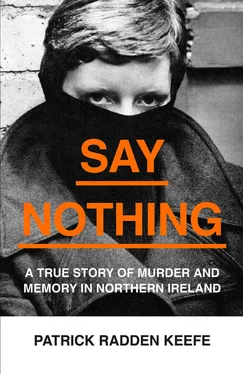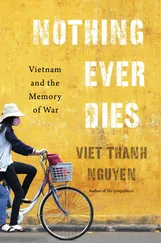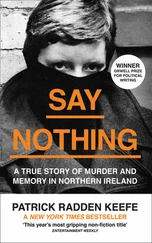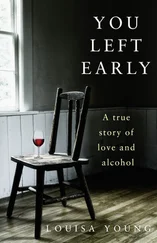There were moments of anarchic poetry: a bulldozer that someone had left on a building site was liberated by a couple of kids, who sat atop the huge machine and drove it jauntily down a West Belfast street, to great whoops and cheers from their compatriots. At a certain point the boys lost control of their hulking steed and crashed into a telegraph pole – where somebody immediately lobbed a petrol bomb at the bulldozer and it burst into flames.
Loyalist gangs started moving systematically through Bombay Street, Waterville Street, Kashmir Road and other Catholic enclaves, breaking windows and tossing petrol bombs inside. Hundreds of homes were gutted and destroyed, their occupants put out onto the street. As the rioting spread, ordinary families all across Belfast boarded up their doors and windows, as if for an approaching hurricane. They would move their old furniture away from the front room so there was less to burn, in the event that any incendiary material came crashing through the window. Then they would huddle in the back kitchen, grandparents clasping their rosaries, and wait for the chaos to pass.
Nearly two thousand families fled their homes in Belfast that summer, the overwhelming majority of them Catholic. Some 350,000 people lived in Belfast. Over the ensuing years, as much as 10 per cent of the population would relocate. Sometimes a mob of a hundred people would converge on a house, forcing the inhabitants to leave. On other occasions, a note would come through the letter box, instructing the owners that they had a single hour to vacate. People crammed into cars that would shuttle them across the city to safety: it was not unusual to see a family of eight squeezed into a single car. Eventually, thousands of Catholics would queue at the railway station – refugees, waiting for passage on a southbound train to the Republic.
It was not long before the mob came for the McConvilles. A gang of local men visited Arthur and told him he had to leave. He slipped out under cover of darkness and sought refuge at his mother’s house. At first, Jean and the children stayed behind, thinking the tensions might subside. But eventually they, too, were forced to flee, packing all the belongings they could into a taxi.
The city that they traversed was transformed. Lorries whizzed to and fro with whatever furniture people could gather before moving. Men staggered through the streets under the weight of ageing sofas and wardrobes. Cars burned at intersections. Firebombed school buildings smouldered. Great plumes of smoke blotted out the sky. All the traffic lights had been shattered, so, at some junctions, young civilians stood on the street, directing traffic. Sixty buses had been commandeered by Catholics and placed along streets to form barricades, a new set of physical battle lines delineating ethnic strongholds. Everywhere there was rubble and broken glass, what one poet would memorably describe as ‘Belfast confetti’.
Yet, in the midst of this carnage, the hard-headed citizens of Belfast simply adapted and got on with their lives. In a momentary lull in the shooting, a front door would tentatively crack open and a Belfast housewife in horn-rimmed glasses would stick her head out to make sure the coast was clear. Then she would emerge, erect in her raincoat, a head scarf over her curlers, and walk primly through the war zone to the shops.
The taxi driver was so fearful of the chaos that he refused to take Jean McConville and her children any further than the Falls Road, so they were forced to lug their belongings the rest of the way on foot. They rejoined Arthur at his mother’s house, but Mary McConville had only one bedroom. She was half-blind, and because she had always disapproved of the former domestic employee who married her son, she and Jean did not get along. Besides, there were frequent gun battles in the area, and Jean and Arthur were concerned that a timber yard behind the house might be torched and the fire could spread. So the family moved again, to a Catholic school that had been converted into a temporary shelter. They slept in a classroom on the floor.
The housing authority in Belfast was building temporary accommodation for thousands of people who had suddenly become refugees in their own city, and eventually the McConvilles were offered a newly constructed chalet. But when they arrived to move in, they discovered that a family of squatters had beaten them there. Many displaced families were squatting wherever they could. Catholics moved into homes that had been abandoned by Protestants, and Protestants moved into homes vacated by Catholics. At a second chalet, the McConvilles encountered the same problem: another family was already living there and refused to leave. There were new chalets being built on Divis Street, and this time Arthur McConville insisted on staying with the workmen who were building it until the moment they finished construction, so that nobody else could get in first.
It was a simple structure, four rooms with an outside toilet. But it was the first time that they had a place they could legitimately call their own, and Jean, delighted, went straight out and bought material to make curtains. The family stayed in the chalet until February 1970, when they were offered permanent accommodation in a new housing complex known as Divis Flats, which had been under construction for several years and now loomed into view, throwing the surrounding neighbourhood into shadow.
Divis Flats was meant to be a vision of the future. Built between 1966 and 1972 as part of a ‘slum clearance’ programme, in which an ancient neighbourhood of overcrowded nineteenth-century dwellings, known as the Pound Loney, was razed, the flats consisted of a series of twelve interconnected housing blocks, containing 850 units. Inspired by Le Corbusier, the flats were conceived as a ‘city in the sky’ that would alleviate housing shortages while also providing a level of amenities that would seem downright luxurious to ordinary Belfast families like the McConvilles. Residents of Divis Flats would have a shower and an indoor toilet, along with a hot-water sink. Each level of the housing block had a wide concrete balcony running from one end to the other, onto which the flats opened. This was meant to evoke the little streets outside the terraced houses of the Pound Loney – a recreational area where children could play. Each door was painted a candy hue, and the reds and blues and yellows offered a vibrant pop of optimistic colour against Belfast’s many shades of grey.
The McConvilles moved into a four-bedroom maisonette in a section of the flats called Farset Walk. But any excitement they may have felt about their new accommodation soon dissipated, because the complex had been constructed with little consideration for how people actually live. There were no social amenities in Divis Flats, no green spaces, no landscaping. Apart from two bleak football pitches and an asphalt enclosure with a couple of swing sets, there were no playgrounds – in a complex with more than a thousand children.
When Michael McConville moved in, Divis seemed to him like a maze for rats, all corridors, stairwells and ramps. The interior walls were cheap plasterboard, so you could hear every word of the dinnertime conversation of your neighbours. And because the exterior walls were built with non-porous concrete, condensation developed, and a malignant black mould began to creep up the walls and across the ceilings of the flats. For a utopian architectural project, Divis had yielded dystopian results, becoming what one writer would later describe as a ‘slum in the sky’.
The same summer that the McConvilles were ousted from their home in East Belfast, the British Army had been sent to Northern Ireland in response to the Battle of the Bogside and the riots. Young, green-jacketed soldiers arrived on ships, thousands of them pouring into Belfast and Derry. Initially they were greeted warmly by Catholics, who welcomed the soldiers as if they were the Allied troops who’d liberated Paris. The Catholic population had been so furious at the RUC and the B-Specials, whom they regarded as sectarian authorities, that when the army (which appeared neutral by comparison) showed up, it seemed to hold the promise of greater security. In West Belfast, Catholic mothers ventured up to the army’s sandbagged posts and offered the soldiers cups of tea.
Читать дальше












